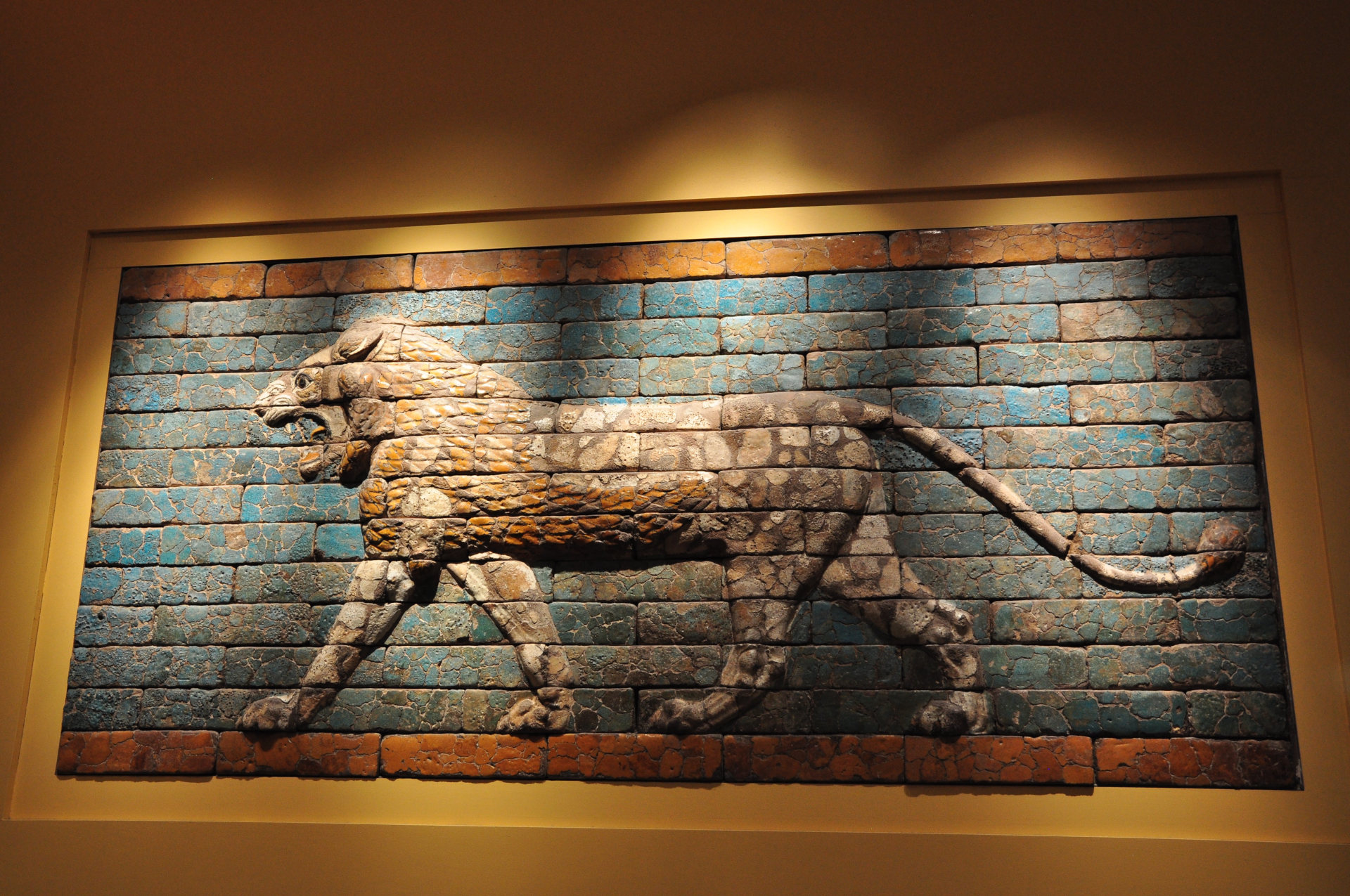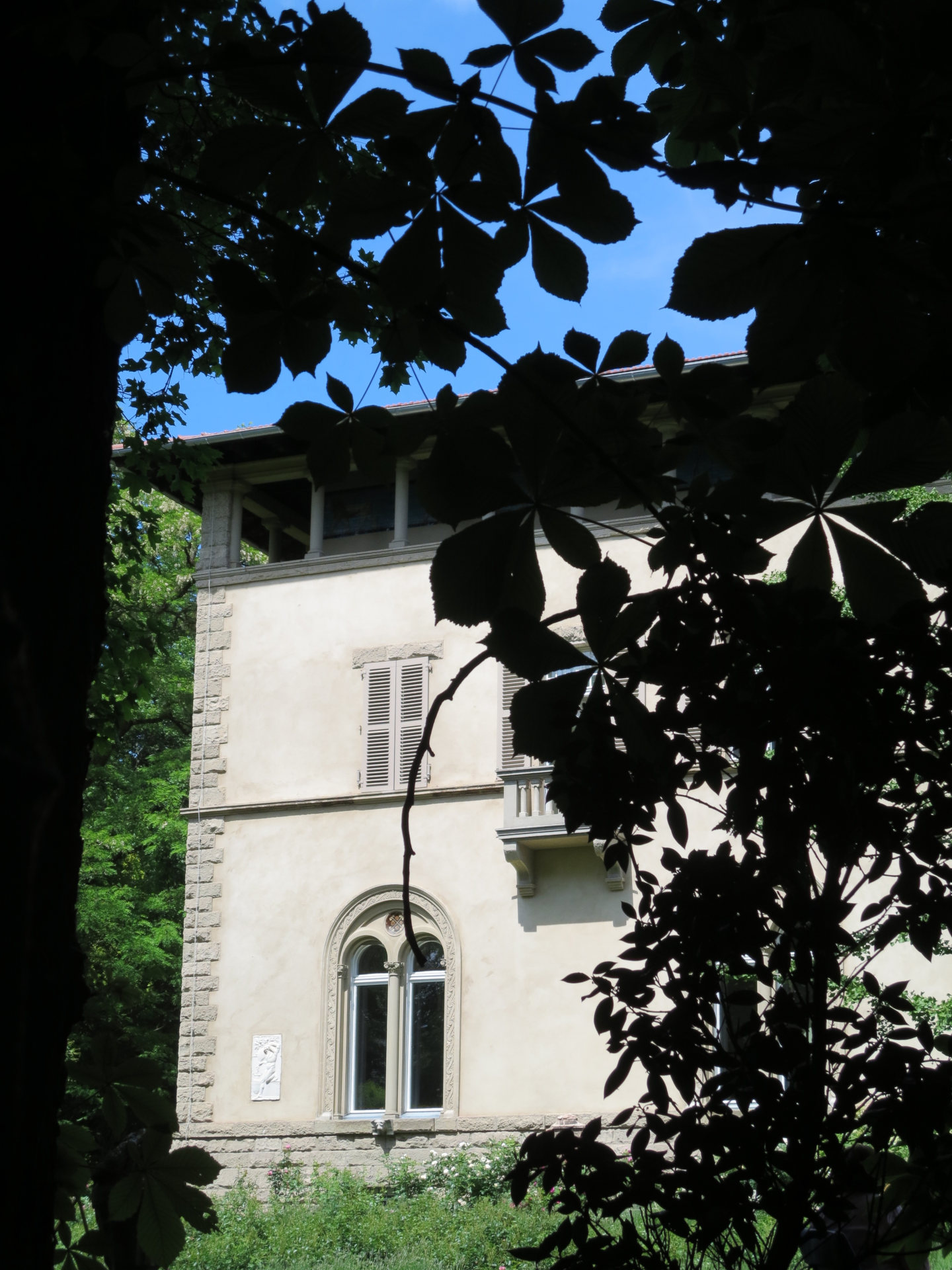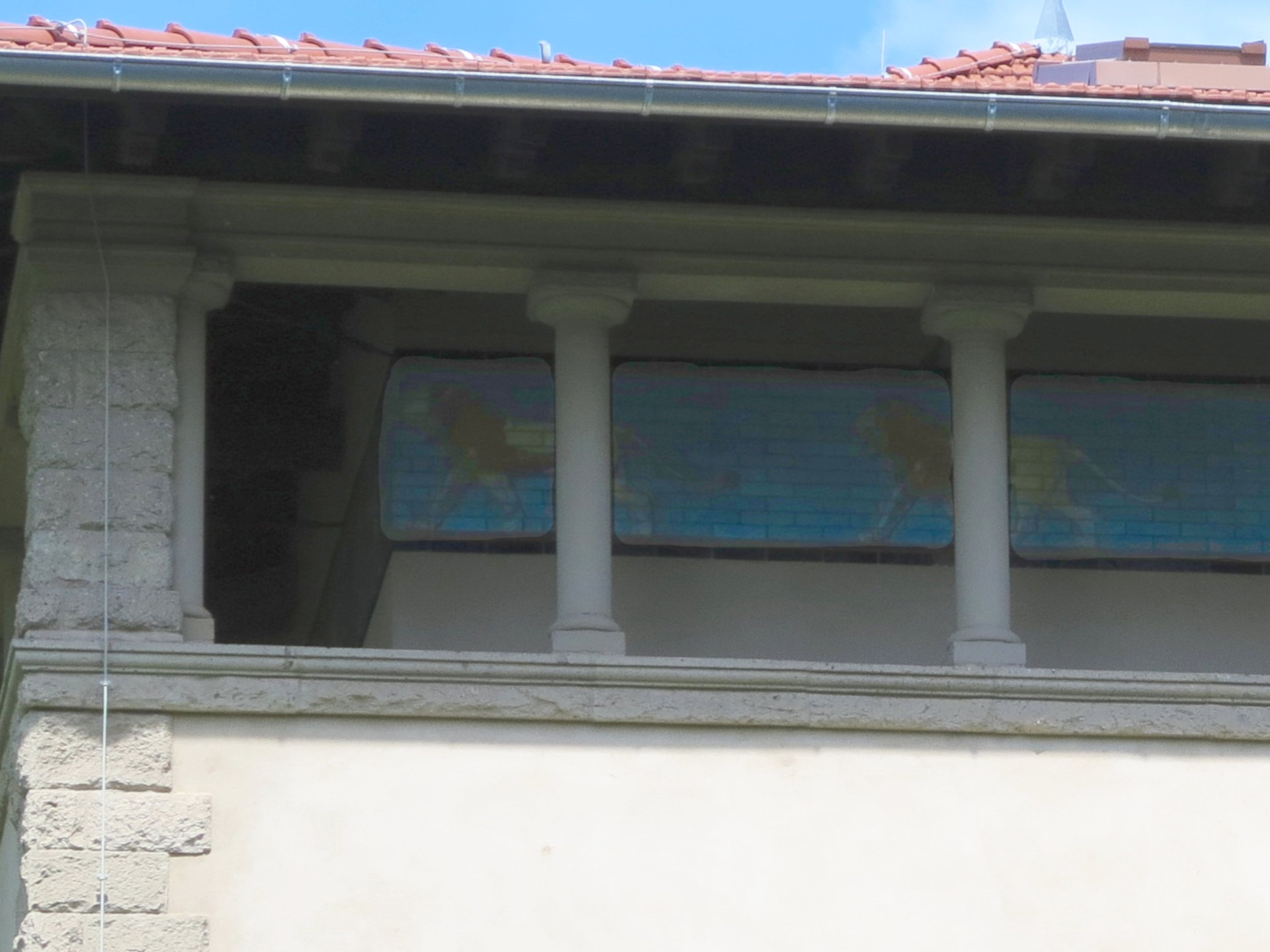In our latest video (link), we take a look at the famous Ishtar Gate from the ancient city of Babylon (now called Babel, in the heart of Iraq). Today the Ishtar Gate is housed in Berlin’s Pergamon Museum because it was excavated by German archaeologists at the start of the twentieth century (like Nefertiti – see our video about that history!). Back then, the archaeological site of Babylon lay in the Ottoman Empire. The Ottomans and Germans worked out numerous deals by which German researchers excavated huge monuments on Ottoman territory and brought home a portion of what they found; the same goes for the Pergamon Altar in Asia Minor, which was also under Ottoman rule.
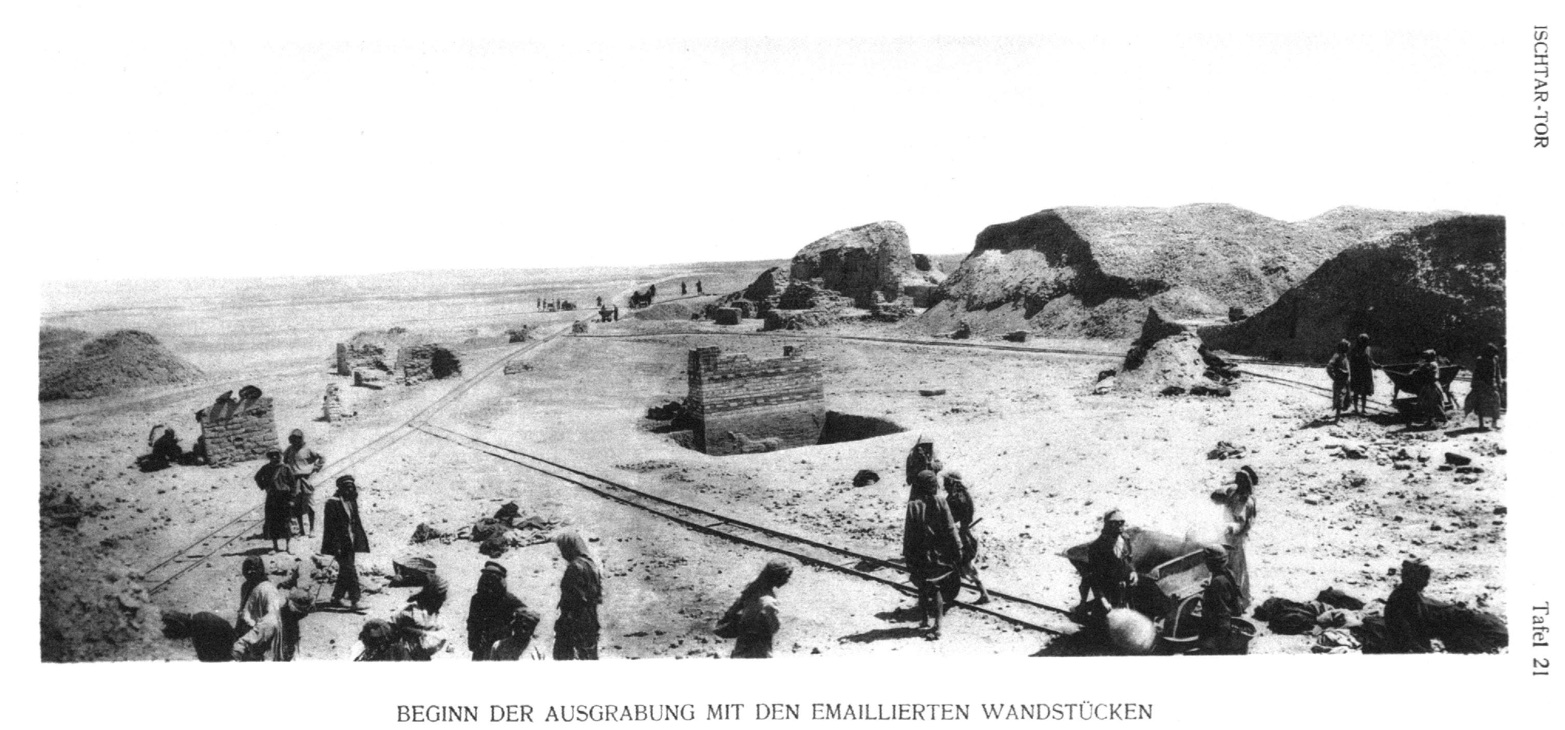
Now pieces of the Gate are distributed among numerous museums, including the Louvre, the Istanbul Archaeology Museum, and the Museum of Fine Arts in Boston (photo).
Not many people know that the Ishtar Gate exists in two other locations in Berlin – in a way. One of these is a villa in the green outskirts of Berlin, in Babelsberg. The Villa Sarre was owned by the director of Berlin’s Islamic Museum in the 1920s, Friedrich Sarre. Sarre retired in 1931, the year after the Ishtar Gate reconstruction in the Pergamon Museum was opened to the public. Apparently Sarre was so taken with the piece that he commissioned a copy of the striding lions from the Processional Way leading up to the Gate – and placed them along his veranda!
You can find shades of the Ishtar Gate at yet another, unexpected place in Berlin… Can you guess where? The answer is on our Instagram channel!
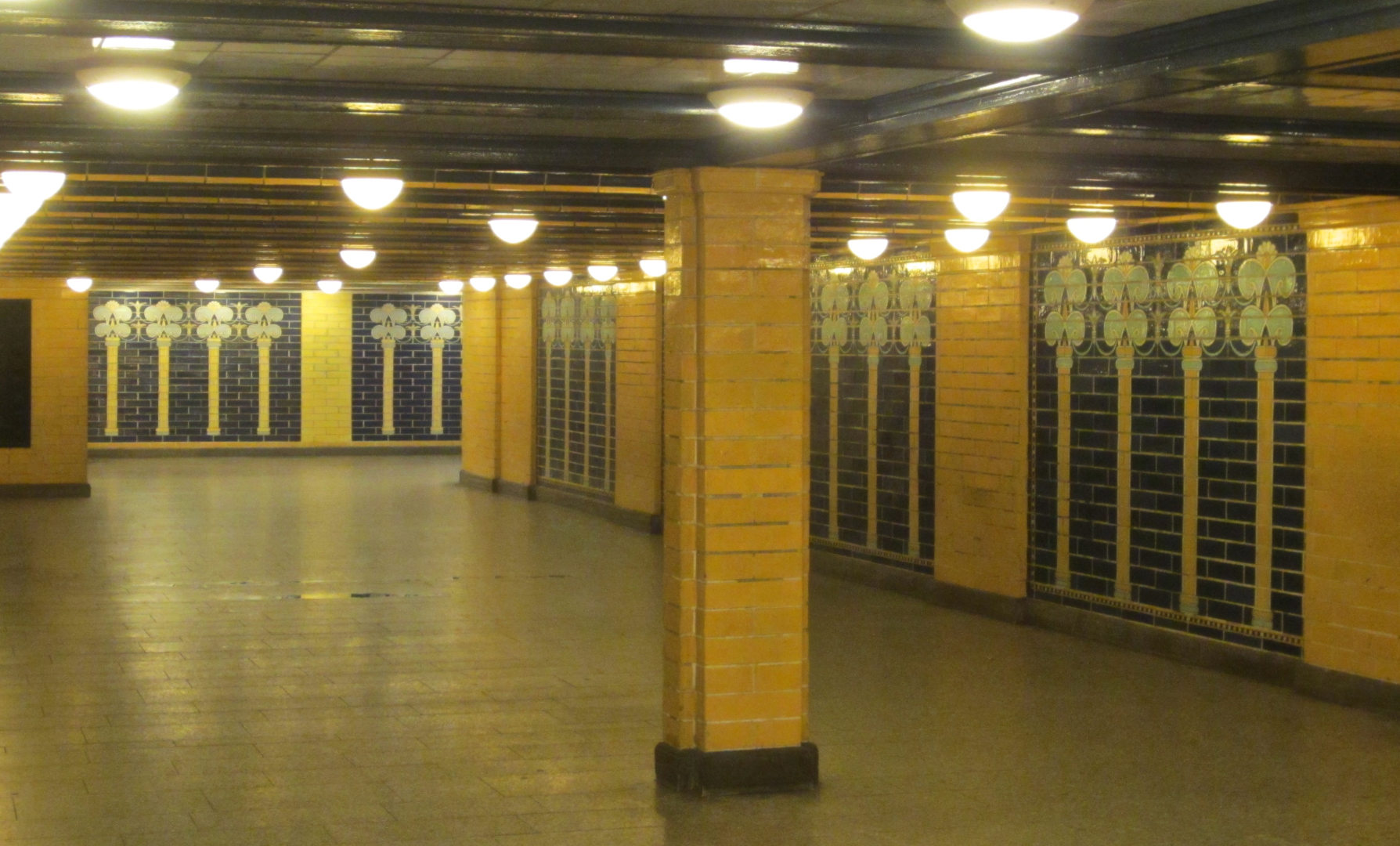
Have you seen the Ishtar Gate too? Let us know your thoughts here in the Comments section, or come visit us on Instagram – we’ll see you there!

